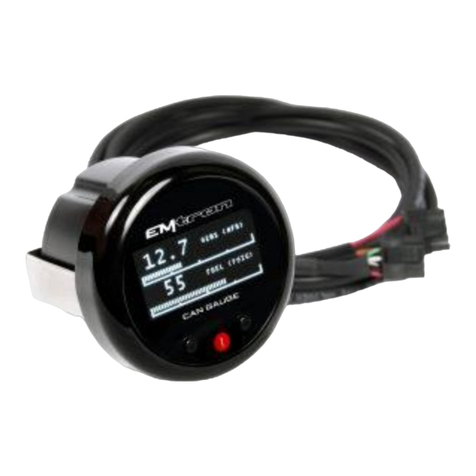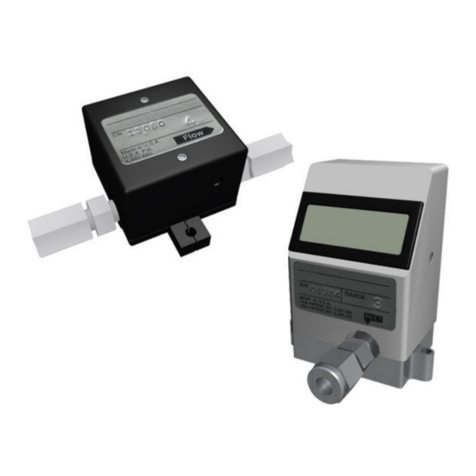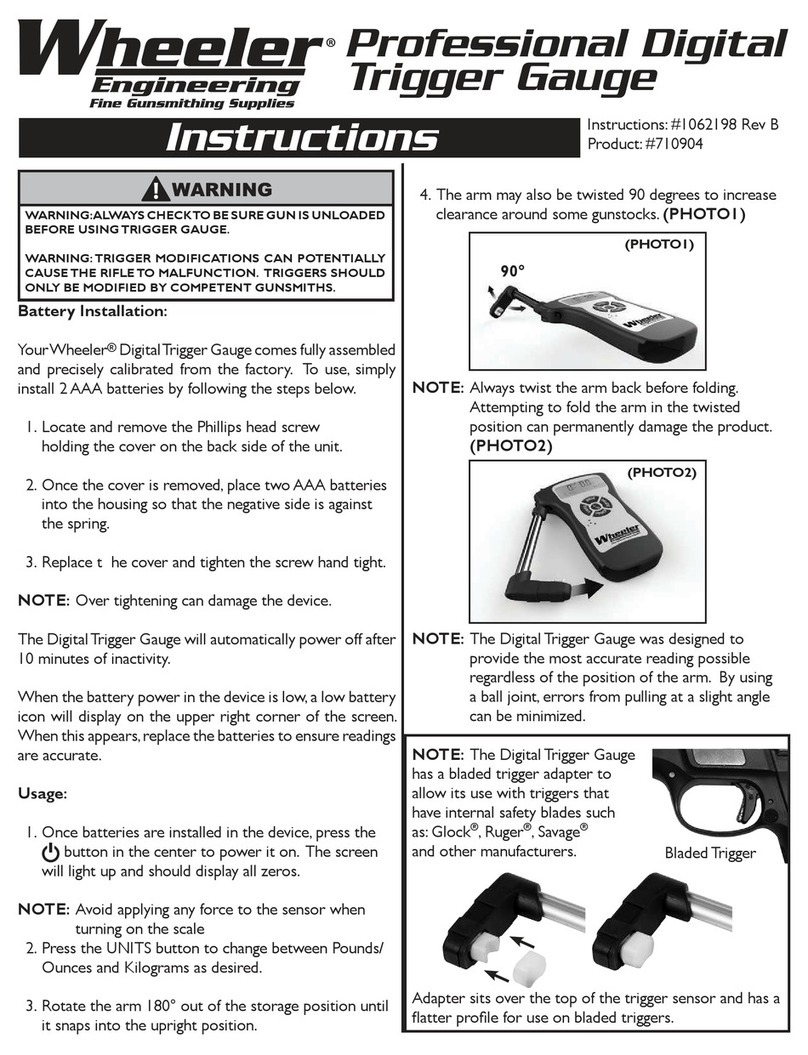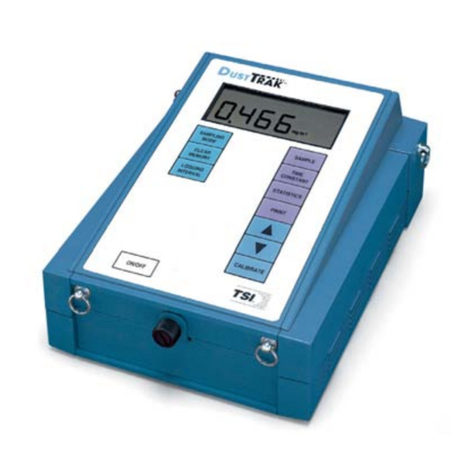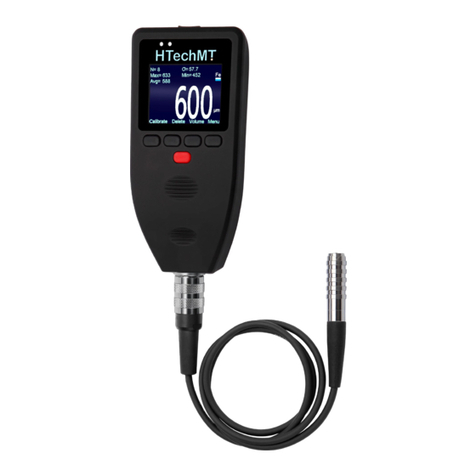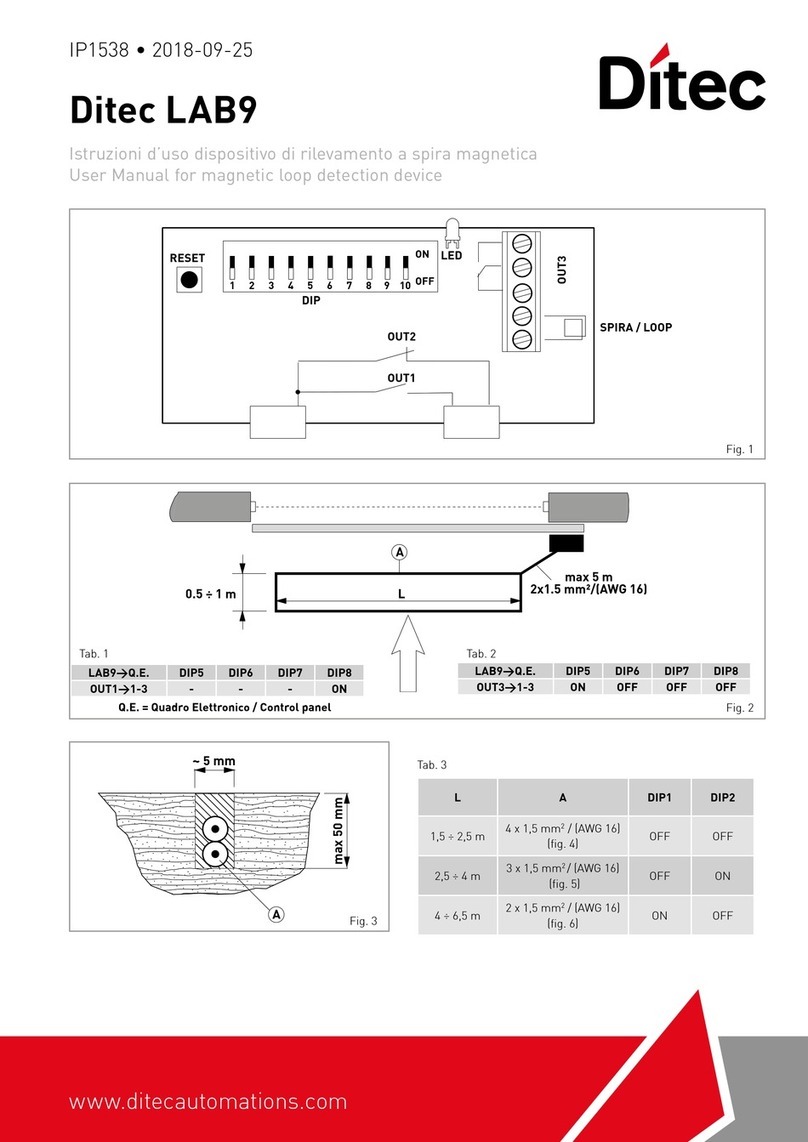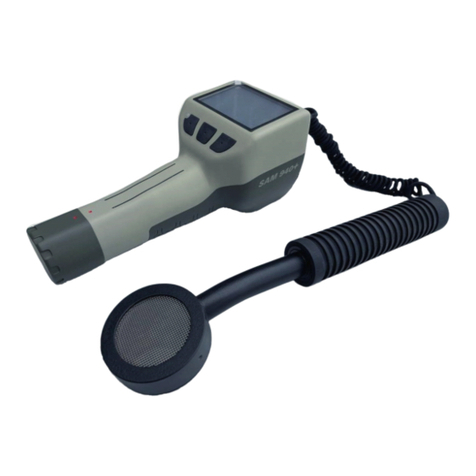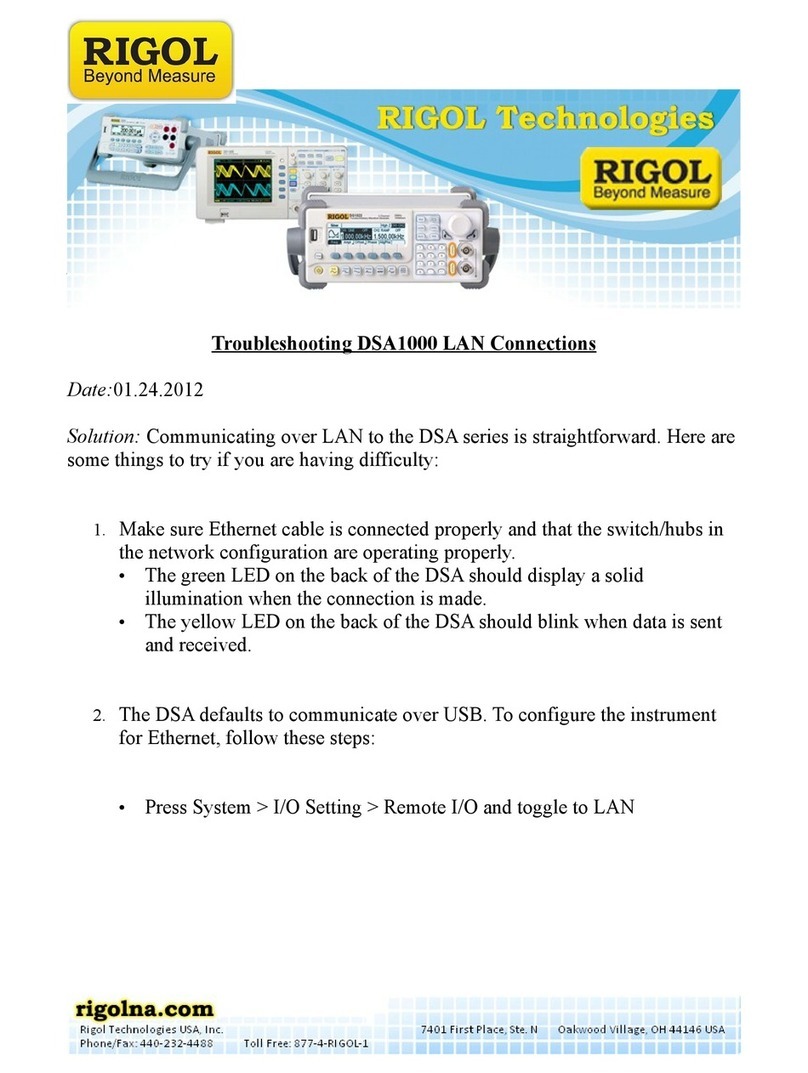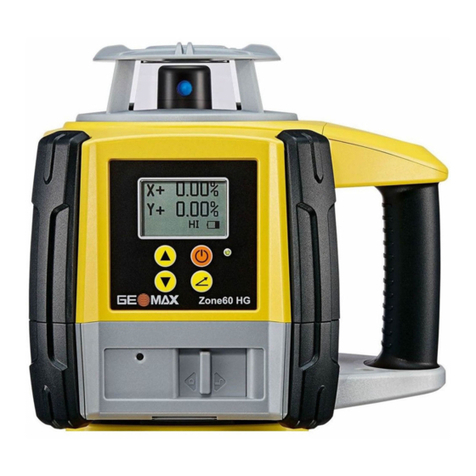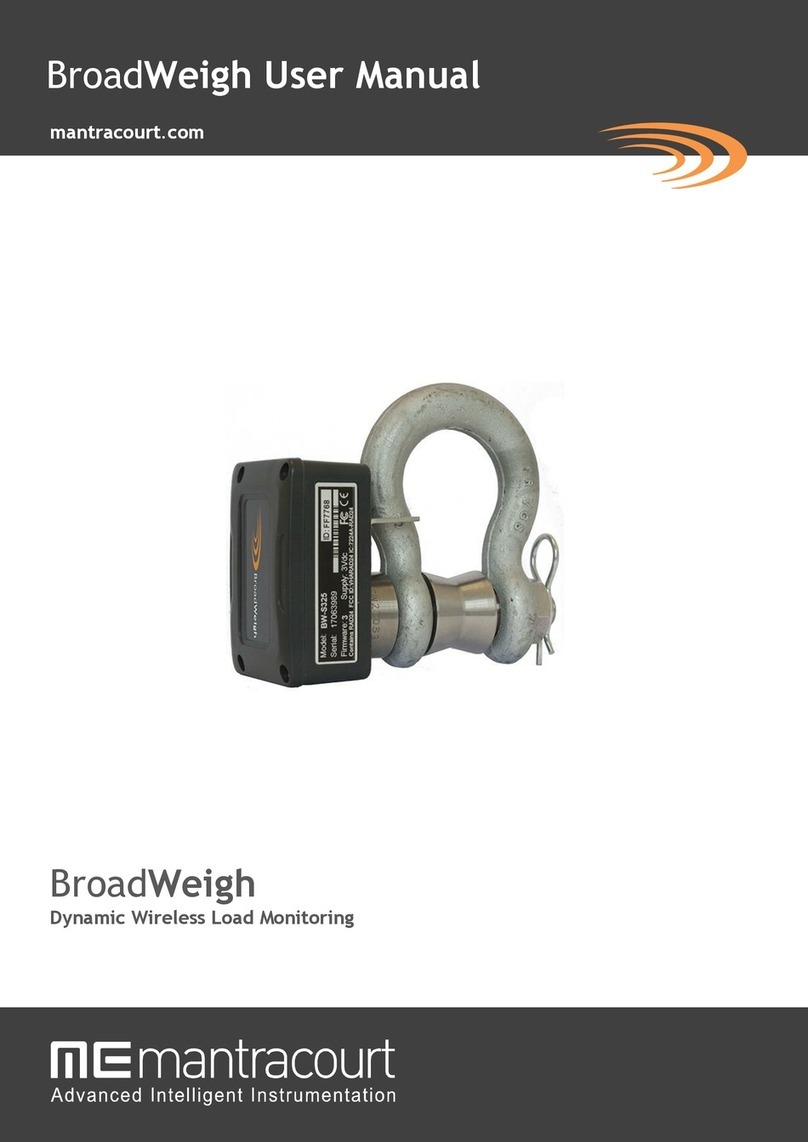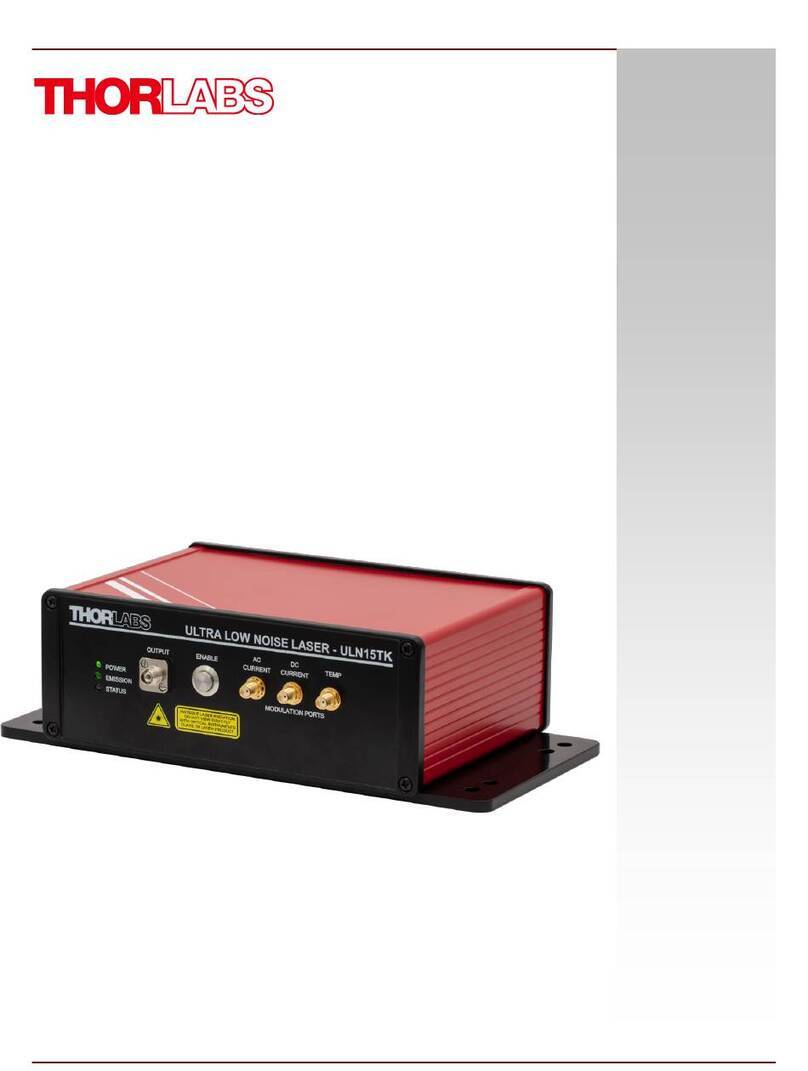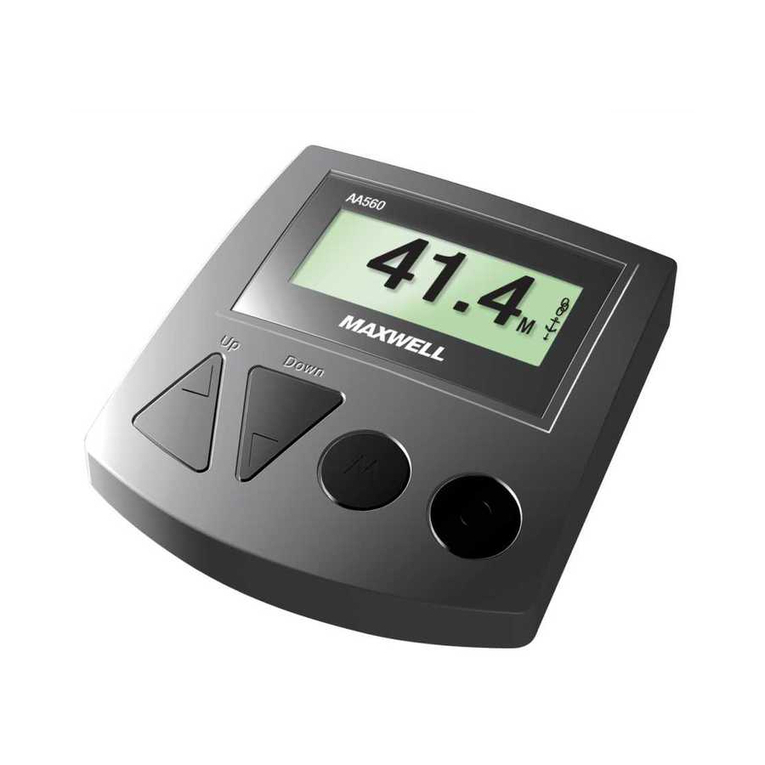Aspect A-2000 BIS User manual

Aspect Medical Systems
A-2000™
BISPECTRAL INDEX™(BIS™)
MONITORING SYSTEM
OPERATING MANUAL
Rx only
©Copyright, 2006, Aspect Medical Systems. All rights reserved. Copying or other
reproduction of this document is prohibited without prior written consent of Aspect
Medical Systems.
EC REP
Aspect Medical Systems, Inc. Aspect Medical Systems International B.V.
One Upland Road Rijnzathe 7d2
Norwood, MA 02062 3454 PV De Meern
U.S.A. The Netherlands
(Tel) 617-559-7000 Tel: +31.30.662.9140
(Tel) 888-BIS INDE(X) (U.S. only) Fax: +31.30.662.9150 0123
(Fax) 617-559-7400 amsint@aspectms.com
bis_info@aspectms.com
www.aspectmedical.com 070-0015 3.04

Considerations for Using BIS Monitoring
Clinical judgment should always be used when interpreting the BIS in conjunction with other
available clinical signs. Reliance on the BIS alone for intraoperative anesthetic management
is not recommended. As with any monitored parameter, artifacts and poor signal quality may
lead to inappropriate BIS values. Potential artifacts may be caused by poor skin contact (high
impedance), muscle activity or rigidity, head and body motion, sustained eye movements,
improper sensor placement and unusual or excessive electrical interference. Due to limited
clinical experience in the following applications, BIS values should be interpreted cautiously in
patients with known neurological disorders, those taking other psychoactive medications and in
children below the age of one.

TABLE OF CONTENTS
ABOUT THIS MANUAL.....................................................................................................I
INTRODUCING THE A-2000 BIS MONITORING SYSTEM.............................................. II
INDICATIONS FOR USE..................................................................................................II
INTRODUCTION............................................................................................................... II
1SAFETY PRECAUTIONS........................................................................................1-1
1.1 WARNINGS...........................................................................................................1-1
1.2 CAUTIONS............................................................................................................1-3
1.3 KEY TO SYMBOLS...............................................................................................1-5
2INSTALLATION AND PREPARATION FOR USE..................................................2-1
2.1 A-2000 BIS MONITOR INSTALLATION AND CHECKOUT .................................2-1
2.2 ENVIRONMENT....................................................................................................2-2
2.2.1 SHIPPING AND STORAGE ENVIRONMENT ................................................................2-2
2.2.2 OPERATING ENVIRONMENT ...................................................................................2-2
2.2.3 POWER REQUIREMENTS AND SYSTEM GROUNDING ...............................................2-3
2.2.4 SITE PREPARATION:MOUNTING THE MONITOR ......................................................2-3
2.3 THE A-2000 BIS MONITORING SYSTEM -EQUIPMENT AND SUPPLIES.........2-5
2.3.1 THE BIS MONITOR................................................................................................2-6
2.3.2 DIGITAL SIGNAL CONVERTER (DSC) ...................................................................2-10
2.3.3 PATIENT INTERFACE CABLE (PIC) .......................................................................2-10
2.3.4 BIS SENSOR.......................................................................................................2-10
2.3.5 A-2000 SYSTEM CONFIGURATIONS .....................................................................2-11
2.3.6 PLATFORM COMPATIBILITY CONSIDERATIONS ......................................................2-12
2.3.7 UPGRADING A-2000 STANDARD SYSTEMS...........................................................2-12
2.4 CABLE CONNECTIONS.....................................................................................2-13
2.5 START PROCEDURE.........................................................................................2-13
2.6 MENU SETTINGS ...............................................................................................2-13
2.6.1 LANGUAGE SELECTION MENU .............................................................................2-14
2.6.2 TIME/DATE .........................................................................................................2-14
2.6.3 SAVE SETTINGS..................................................................................................2-14
3OPERATING THE A-2000.......................................................................................3-1
3.1 PREPARING FOR OPERATION...........................................................................3-1
3.2 THE SENSOR CHECK AND SENSOR INTEGRITY CHECK................................3-3
3.3 THE BIS TREND SCREEN DISPLAY ...................................................................3-5
3.3.1 THE BIS (BISPECTRAL INDEX)NUMERIC REGION ...................................................3-5
3.3.2 THE SIGNAL QUALITY REGION...............................................................................3-6
3.3.3 THE MESSAGE REGION .........................................................................................3-7
3.3.4 GRAPHIC DISPLAY REGION ...................................................................................3-7

3.4 THE A-2000 SOFTWARE MENUS AND MENU SELECTIONS............................3-9
3.4.1 MENU NAVIGATION: ..............................................................................................3-9
3.4.2 THE SETUP MENU...............................................................................................3-10
3.4.3 THE ADVANCED SETUP MENU .............................................................................3-12
3.4.4 DISPLAY PARAMETER SETUP ..............................................................................3-16
3.4.5 THE DIAGNOSTIC MENU ......................................................................................3-18
3.4.6 ALARM MENU .....................................................................................................3-18
3.4.7 LANGUAGE SELECTION MENU .............................................................................3-21
3.4.8 SENSOR DATA DISPLAY SCREEN AND SYSTEM CONFIGURATION MENU ................3-21
3.5 ALTERNATIVE DISPLAYS.................................................................................3-22
3.5.1 THE DSA DISPLAY:.............................................................................................3-22
3.5.2 THE EEG DISPLAY..............................................................................................3-23
3.5.3 THE BIS LOG DISPLAY ........................................................................................3-24
3.6 REVIEWING STORED TREND DATA ................................................................3-27
3.7 ENDING ACASE ................................................................................................3-28
3.8 DATA TRANSFER ..............................................................................................3-28
3.9 SOFTWARE UPDATES......................................................................................3-29
4QUICK REFERENCE GUIDE ..................................................................................4-1
5FEATURES AND CAPABILITIES ...........................................................................5-1
5.1 HOW THE A-2000 MONITORING SYSTEM WORKS...........................................5-1
5.2 SYSTEM FEATURES............................................................................................5-1
5.2.1 BISPECTRAL INDEX (BIS) ......................................................................................5-1
5.2.2 SIGNAL QUALITY INDEX (SQI) ...............................................................................5-1
5.2.3 ELECTROMYOGRAPH (EMG) INDICATOR ................................................................5-2
5.2.4 ELECTROENCEPHALOGRAM (EEG) WAVEFORM DISPLAY .......................................5-2
5.2.5 FILTERS ...............................................................................................................5-2
5.2.6 SUPPRESSION RATIO (SR)....................................................................................5-2
5.2.7 BURST COUNT (BURSTS/MIN) ............................................................................5-2
5.2.8 DENSITY SPECTRAL ARRAY (DSA) ........................................................................5-3
5.2.9 BIS LOG DISPLAY .................................................................................................5-3
5.2.10 ARTIFACT DETECTION .........................................................................................5-3
5.2.11 EVENT MARKERS ................................................................................................5-3
5.2.12 START AND END OF CASE BARS /CASE ID...........................................................5-3
5.2.13 LIMIT ALARMS .....................................................................................................5-3
5.2.14 BIS TREND SMOOTHING......................................................................................5-4
5.2.15 EVENT PRINTING.................................................................................................5-4
5.2.16 LANGUAGES........................................................................................................5-4
5.2.17 TIME/DATE AND CLEAR DATA MEMORY................................................................5-4
5.2.18 SENSOR DATA DISPLAY (BIS XP PLATFORM ONLY)..............................................5-4
5.2.19 ICU MODE /EXTEND MODE.................................................................................5-4
5.2.20 SYSTEM SELF-CHECKS .......................................................................................5-5
5.2.21 DATA MEMORY ...................................................................................................5-5
5.2.22 SAVED SETTINGS................................................................................................5-6
5.2.23 BATTERY OPERATION..........................................................................................5-6

5.2.24 DATA TRANSFER AND SOFTWARE UPDATES.........................................................5-6
5.2.25 PRINTED REPORTS .............................................................................................5-7
6PREVENTIVE MAINTENANCE, CARE AND CLEANING ......................................6-1
6.1 CARE AND CLEANING ........................................................................................6-1
6.2 ROUTINE MAINTENANCE...................................................................................6-2
6.3 FUSE REPLACEMENT.........................................................................................6-3
6.4 SYSTEM CHECKOUT...........................................................................................6-4
6.5 TECHNICAL DOCUMENTATION.........................................................................6-5
6.6 INSTRUMENT IDENTIFICATION..........................................................................6-5
7DIAGNOSTICS AND TROUBLESHOOTING..........................................................7-1
7.1 THE DIAGNOSTIC MENU.....................................................................................7-1
7.1.1 DSC SELF-TEST...................................................................................................7-2
7.1.2 DISPLAY SELF-TEST .............................................................................................7-2
7.1.3 SENSOR DATA DISPLAY (BIS XP PLATFORM ONLY)................................................7-2
7.1.4 CLEAR DATA.........................................................................................................7-3
7.1.5 DIAGNOSTIC CODES .............................................................................................7-3
7.1.6 IMPEDANCE CHECKING .........................................................................................7-3
7.1.7 SYSTEM CONFIGURATION MENU ...........................................................................7-3
7.2 SYSTEM ERROR MESSAGE ALARMS...............................................................7-5
7.3 WHAT TO DO IF THE A-2000 REQUIRES SERVICE.........................................7-10
8SPECIFICATIONS, WARRANTY AND SOFTWARE LICENSE AGREEMENT .....8-1
8.1 SPECIFICATIONS.................................................................................................8-1
8.2 WARRANTY..........................................................................................................8-4
8.3 SOFTWARE LICENSE AGREEMENT..................................................................8-6
9APPENDIX...............................................................................................................9-1
9.1 APPENDIX I–PROCESSED EEG VARIABLES ..................................................9-1
9.2 A-2000 MENU MAP...............................................................................................9-2
9.3 MENU LISTING.....................................................................................................9-5

TABLE OF FIGURES
Figure 1 - Symbol Key....................................................................................................1-5
Figure 2 Pole Clamp .....................................................................................................2-4
Figure 3 The A-2000 BIS Monitoring System................................................................2-5
Figure 4 Front Panel (Example Illustration)...................................................................2-6
Figure 5 Front Panel Controls .......................................................................................2-7
Figure 6 Rear Panel ......................................................................................................2-8
Figure 7 BIS Sensor Connections...............................................................................2-12
Figure 8 Connecting the PIC (BIS XP Platform and XP Compatible) ...........................3-2
Figure 9 The Sensor Check (BIS Standard and BIS Pediatric sensors) .......................3-3
Figure 10 The Sensor Check (BIS Quatro and BIS Extend) .........................................3-4
Figure 11 - Screen Regions and Features.....................................................................3-5
Figure 12 The BIS Trend Display with BIS Extend Sensor in Use................................3-7
Figure 13 The BIS Trend Display..................................................................................3-8
Figure 14 Menu Navigation ...........................................................................................3-9
Figure 15 Main Screen with Setup Menu and Trend Display......................................3-10
Figure 16 The Advanced Setup Menu ........................................................................3-12
Figure 17 The Display Parameter Setup screen .........................................................3-16
Figure 18 The Alarm Menu .........................................................................................3-18
Figure 19 The Language Selection Menu ...................................................................3-21
Figure 20 The Density Spectral Array (DSA) Display .................................................3-22
Figure 21 The EEG Display ........................................................................................3-23
Figure 22 The BIS Log Display – Current Case..........................................................3-24
Figure 23 The BIS Log Display – Review Mode .........................................................3-25
Figure 24 Main Screen with Trend Review .................................................................3-27
Figure 25 The Diagnostic Menu ....................................................................................7-1
Figure 26 Sensor Data Display .....................................................................................7-2
Figure 27 The System Configuration Menu ..................................................................7-3

i
ABOUT THIS MANUAL
This Operating Manual contains all of the information you need to set up and operate the
Aspect Medical Systems’ A-2000 BIS Monitoring System (Figure 3). It also includes
specific cleaning and test procedures you may occasionally be required to perform.
Although this manual is intended for trained medical personnel, it does not assume prior
knowledge or experience with operator-programmable medical electronics devices.
Keep this Operating Manual with the A-2000 for use by the operator. This manual is
also intended to be a service information manual for service technicians or biomedical
engineering personnel.
Section 1 discusses important "Safety Precautions." Before attempting to set up or use
the A-2000, please familiarize yourself with the safety information provided in this
section.
Section 2 covers A-2000 installation, including system checkout, environmental
considerations, equipment and supplies needed, basic connections and setup.
Section 3 explains how to operate the A-2000 under normal conditions. It also covers
advanced features such as software updates and data transfer.
Section 4 serves as a quick reference for users who are already familiar with the
system.
Section 5 discusses the features and capabilities of the A-2000 system.
Section 6 covers normal care and cleaning procedures and maintenance, which should
be performed by the operator on a regular basis.
Section 7 covers diagnostics and troubleshooting and includes a summary of error
messages and actions that should be taken by the operator.
Section 8 details the system specifications, product warranty, and the software license
agreement.
Section 9 provides additional information on processed variables, and a menu map and
listing.

ii
INTRODUCING THE A-2000 BIS MONITORING SYSTEM
INDICATIONS FOR USE
The Aspect A-2000 EEG Monitor with BIS is intended for use under the direct
supervision of a licensed healthcare practitioner or by personnel trained in its proper
use. The BIS Monitor is intended for use on adult and pediatric patients within a hospital
or medical facility providing patient care to monitor the state of the brain by data
acquisition of EEG signals.
The BIS may be used as an aid in monitoring the effects of certain anesthetic agents.*
Use of BIS monitoring to help guide anesthetic administration may be associated with
the reduction of the incidence of awareness with recall in adults during general
anesthesia and sedation.
INTRODUCTION
The A-2000 BIS Monitoring System is a user-configurable patient monitoring system
designed to monitor the hypnotic state of the brain based on acquisition and processing
of EEG signals. The A-2000™processes raw EEG signals to produce a single number,
called the Bispectral Index, or BIS, which correlates with the patient's level of hypnosis.
The A-2000 monitor display consists of:
•The current BIS number
•Trend plots of processed EEG parameters
•Raw EEG waveforms in real time
•Density Spectral Arrays (DSA)
•Numeric BIS log
•Various signal quality indicators (EMG, SQI).
•Suppression Ratio and Burst Count number.
The system performs self-tests to ensure that the monitor and its components are
functioning properly and that impedance levels of patient sensors are within acceptable
limits. Easy-to-use menus allow the user to mark events, review and clear stored data,
and change the data display.
* Gan TJ, Glass P, Windsor A, Payne F, Rosow C, Sebel P, Manberg P. Bispectral
Index Monitoring Allows Faster Emergence and Improved Recovery from
Propofol, Alfentanil and Nitrous Oxide Anesthesia. Anesthesiology October 1997;
(4) 87:808-15.

SECTION 1 SAFETY PRECAUTIONS
______________________________________________________________________
1-1
SECTION 1
1 SAFETY PRECAUTIONS
INTRODUCTION
Caution:
Carefully read this entire manual before using the
monitor in a clinical setting.
WARNINGS, CAUTIONS, AND NOTES
The terms warning, caution, and note have specific meanings in this manual.
•A WARNING advises against certain actions or situations that could result in
personal injury or death.
•A CAUTION advises against actions or situations that could damage equipment,
produce inaccurate data, or invalidate a procedure, although personal injury is
unlikely.
•A NOTE provides useful information regarding a function or procedure.
KEY TO SYMBOLS
A key to the symbols used on the A-2000 appears at the end of this section.
1.1 WARNINGS
GROUND WIRE LEAKAGE CURRENT MUST BE CHECKED WHENEVER
INSTRUMENT CASE IS OPENED BY A QUALIFIED BIOMEDICAL ENGINEERING
TECHNICIAN.
EXPLOSION HAZARD: DO NOT USE THE A-2000 IN A FLAMMABLE ATMOSPHERE
OR WHERE CONCENTRATIONS OF FLAMMABLE ANESTHETICS MAY OCCUR.
ELECTRICAL SHOCK HAZARD: DO NOT REMOVE MONITOR COVERS DURING
OPERATION OR WHILE POWER IS CONNECTED TO MONITOR.
ELECTRICAL SHOCK HAZARD: THE MANUFACTURER'S INSPECTION OF THIS
APPARATUS VERIFIED THAT THE GROUND LEAKAGE CURRENT AND THE
PATIENT SAFETY CURRENT WERE LESS THAN THE SPECIFIED LIMITS
ESTABLISHED BY THE APPLICABLE SAFETY STANDARDS. AS A MATTER OF
SAFE PRACTICE, THE INSTITUTION SHOULD CONDUCT PERIODIC TESTS TO
VERIFY THESE CURRENTS. WHENEVER AN EVENT SUCH AS SPILLAGE OF
BLOOD OR SOLUTIONS OCCURS, RE-TEST BEFORE FURTHER USE.
SHOCK HAZARD: DO NOT ATTEMPT TO DISCONNECT THE POWER CORD WITH
WET HANDS. MAKE CERTAIN THAT YOUR HANDS ARE CLEAN AND DRY
BEFORE TOUCHING THE POWER CORD.

SECTION 1 SAFETY PRECAUTIONS
______________________________________________________________________
1-2
FOR PROPER GROUNDING, THE POWER RECEPTACLE MUST BE A THREE-WIRE
GROUNDED OUTLET. A HOSPITAL GRADE OUTLET IS REQUIRED. NEVER
ADAPT THE THREE-PRONG PLUG FROM THE MONITOR TO FIT A TWO-SLOT
OUTLET. IF THE OUTLET HAS ONLY TWO SLOTS, MAKE SURE THAT IT IS
REPLACED WITH A THREE-SLOT GROUNDED OUTLET BEFORE ATTEMPTING
TO OPERATE THE MONITOR.
IF THE INTEGRITY OF THE EXTERNAL PROTECTIVE EARTH GROUND IS IN
DOUBT, THE A-2000 SHALL BE OPERATED FROM ITS INTERNAL BATTERY
POWER SOURCE ONLY.
FOR A-2000s USED OUTSIDE OF NORTH AMERICA: A HARMONIZED LINE CORD
WITH CONDUCTORS HAVING A CROSS SECTIONAL AREA GREATER THAN 0.75
mm2MUST BE USED.
THE CONDUCTIVE PARTS OF ELECTRODES OR SENSOR AND CONNECTORS,
INCLUDING THE NEUTRAL ELECTRODE, SHOULD NOT CONTACT OTHER
CONDUCTIVE PARTS, INCLUDING EARTH.
TO REDUCE THE HAZARD OF BURNS IN THE HIGH-FREQUENCY SURGICAL
NEUTRAL ELECTRODE CONNECTION, THE SENSOR OR ELECTRODES SHOULD
NOT BE LOCATED BETWEEN THE SURGICAL SITE AND THE ELECTRO-
SURGICAL UNIT RETURN ELECTRODE.
THE SENSOR MUST NOT BE LOCATED BETWEEN DEFIBRILLATOR PADS WHEN
A DEFIBRILLATOR IS USED ON A PATIENT CONNECTED TO THE A-2000.
TO MINIMIZE THE RISK OF PATIENT STRANGULATION, THE PATIENT
INTERFACE CABLE (PIC) MUST BE CAREFULLY PLACED AND SECURED.
BE SURE THE MONITOR IS MOUNTED SECURELY IN PLACE TO AVOID
PERSONAL OR PATIENT INJURY.
UNIVERSAL PRECAUTIONS SHALL BE OBSERVED TO PREVENT CONTACT WITH
BLOOD OR OTHER POTENTIALLY INFECTIOUS MATERIALS. PLACE
CONTAMINATED MATERIALS IN REGULATED WASTE CONTAINER.
DO NOT MIX DISINFECTING SOLUTIONS (e.g., BLEACH AND AMMONIA), AS
HAZARDOUS GASES MAY RESULT.
WHEN CONNECTING EXTERNAL EQUIPMENT (e.g., DATA CAPTURE
COMPUTER), THE SYSTEM LEAKAGE CURRENT MUST BE CHECKED AND MUST
BE LESS THAN THE IEC601-1-1 LIMIT.

SECTION 1 SAFETY PRECAUTIONS
______________________________________________________________________
1-3
THE USE OF ACCESSORY EQUIPMENT NOT COMPLYING WITH THE
EQUIVALENT SAFETY REQUIREMENTS OF THIS EQUIPMENT MAY LEAD TO A
REDUCED LEVEL OF SAFETY OF THE RESULTING SYSTEM. CONSIDERATION
RELATING TO THE CHOICE SHALL INCLUDE:
•USE OF THE ACCESSORY IN THE PATIENT VICINITY
•EVIDENCE THAT THE SAFETY CERTIFICATION OF THE ACCESSORY HAS
BEEN PERFORMED IN ACCORDANCE TO THE APPROPRIATE IEC 601-1
AND/OR IEC 601-1-1 HARMONIZED NATIONAL STANDARD.
REPLACE FUSES ONLY WITH ONE OF THE FOLLOWING PARTS:
Aspect P/N 430-0006, 1.25 Amps, 250V, 5x20mm
Littelfuse 217 Series, 1.25 Amps, 250V, 5x20mm
Wickmann 193 Series, 1.25 Amps, 250V, 5x20mm
ALWAYS REPLACE BOTH FUSES TOGETHER, EVEN IF ONLY ONE HAS FAILED.
1.2 CAUTIONS
Read this entire manual carefully before using the monitor in a clinical setting.
Do not autoclave the Digital Signal Converter or Monitor. Autoclaving will
seriously damage both components.
Do not block fan output. Keep at least three 3 inches of unobstructed space
between rear of instrument and wall and other instruments. Do not allow other
instruments to block airflow. Do not block ventilation inlet holes on the underside
of monitor.
Do not open Digital Signal Converter for any reason. The seal to prevent liquids
from entering the Digital Signal Converter may be damaged if opened. Service or
repairs must be performed only by qualified biomedical technicians.
Mixing of system configurations will increase sensor and hardware inventory
requirements and may create user and support issues.
Each BIS sensor type has its own placement method. Be sure to carefully follow
the appropriate package directions.
The A-2000 has been designed to operate with a disposable BIS Sensor. The
sensor is a silver/silver chloride electrode array that utilizes Aspect's patented
Zipprep technology and uses a proprietary connector. Use of other electrodes is
not recommended.
Continuous impedance checking may need to be disabled if the 1 nanoampere 128
Hz impedance check signal interferes with other equipment (e.g., evoked potential
monitors).
Check the battery periodically, by operating an A-2000 that has been disconnected
from the wall socket and that has been charging the battery for at least 4 hours.
After long periods of storage (e.g., more than 1 month) it may be necessary to
cycle (charge, then discharge) the battery a few times to get full charge capacity.

SECTION 1 SAFETY PRECAUTIONS
______________________________________________________________________
1-4
If the A-2000 fails to operate reliably from the battery for 20 minutes, battery
replacement is required.
The A-2000 contains an internal Nickel-Metal-Hydride battery. The battery must be
removed by a qualified service technician and disposed of or recycled in
accordance with the national laws of the country. Contact Aspect Medical
Systems, Inc. or the local distributor for servicing of battery.
Avoid liquid ingress to the Patient Interface Cable. Contact of fluids with the PIC
sensor connector can interfere with PIC performance.
The A-2000 system complies with the electromagnetic compatibility requirements
of EN60601-1-2. Operation of this device may affect or be affected by other
equipment in the vicinity due to electromagnetic interference (EMI). If this occurs:
•Increase separation between devices
•Re-orient device cabling
•Plug devices into separate outlet circuit branches
Consult Aspect Medical Systems Technical Support for assistance.
When connecting or disconnecting Digital Signal Converter, take care not to touch
the exposed contacts of either connector. Damage due to electrostatic discharge
may result.
A-2000 is a trademark of Aspect Medical Systems, Inc.
Bispectral Index, BIS, the BIS logo, and Zipprep are trademarks of Aspect Medical
Systems, Inc. and are registered in the U.S.A., E.U. and other countries.

SECTION 1 SAFETY PRECAUTIONS
______________________________________________________________________
1-5
1.3 KEY TO SYMBOLS
ON (power; connection to the mains)
OFF (power; disconnection from the mains)
Audible Alarm Silenced
Operating on Battery
Type BF Equipment
Type BF Equipment Defibrillator-proof
Attention, Consult Accompanying Documents
J1
Attention, J1 RS-232 Serial Port, Consult
Accompanying Documents
J2
Attention, J2 Printer Port, Consult Accompanying
Documents
Figure 1 - Symbol Key

SECTION 1 SAFETY PRECAUTIONS
______________________________________________________________________
1-6
Fuse, Replace only with same Type and Rating
Equipotential
Alternating Current
Dangerous Voltage
Protective Earth (ground)
Storage Temperature Limits
Figure 1 Symbol Key (concluded).

SECTION 2 INSTALLATION AND PREPARATION FOR USE
______________________________________________________________________
2-1
SECTION 2
2 INSTALLATION AND PREPARATION FOR USE
____________________________________________________
INTRODUCTION
This section provides installation instructions for the Aspect A-2000 BIS Monitor, Digital
Signal Converter, and accessories. It includes:
•Installation checklist
•Proper environment
•Required equipment and supplies
•Cable connections
•Start and shutdown procedures
•Menu settings
2.1 A-2000 BIS MONITOR INSTALLATION AND CHECKOUT
1. Open packages and inspect for all components:
•Monitor with power cable
•DSC
•PIC (Patient interface cable, connects DSC to patient)
2. Connect power cable to monitor, plug power plug into appropriate wall outlet.
3. Power up monitor by pressing power switch (lower, right side of case).
•Verify beep tone as power switch is activated.
•Verify fan (rear case wall) moves air outward.
•Verify all power on self-tests complete successfully (approx. 30 seconds).
•Verify next screen says ‘CONNECT DSC CABLE TO FRONT OF MONITOR.’
4. Connect DSC with PIC and Sensor.
•Verify DSC test completes.
•Verify SENSOR CHECK screen displays.
5. Exit from SENSOR CHECK screen by passing impedance check or by exiting with
MENU/EXIT key.
6. Disconnect power cord from rear of monitor.
•Verify ‘OPERATING ON BATTERY BACKUP (E33)’ is displayed.
•Verify battery icon displays in BIS banner.
7. Reconnect power cord.
•Verify battery icon is not displayed in BIS banner.
•Verify ‘OPERATING ON BATTERY BACKUP (E33) is not displayed.
8. Do keyboard checkout:
•Press SILENCE key Verify icon shows at BIS banner.
•Press ARROW BACK key Verify REVIEW MODE screen displays.
•Press MENU/EXIT key Verify REVIEW MODE screen exits.

SECTION 2 INSTALLATION AND PREPARATION FOR USE
______________________________________________________________________
2-2
•Press ARROW AHEAD key Verify REVIEW MODE screen displays.
•Press MENU/EXIT key Verify REVIEW MODE screen exits.
•Press MENU/EXIT key Verify Setup menu displays.
•Press UP ARROW key Verify highlight bar moves up with each press.
•Press DOWN ARROW key Verify highlight bar moves down with each press.
•Press SELECT key Verify that highlighted menu line is selected.
•Press MENU/EXIT until BIS banner is displayed.
9. End of install.
2.2 ENVIRONMENT
2.2.1 Shipping and Storage Environment
The monitor and its accessories can be stored or shipped within the following
environmental limits. Note that these limits apply to non-operational storage and
shipping situations.
Temperature -20°C to +60°C
Humidity 15% to 95% (non-condensing)
Pressure 360 mmHg to 800 mmHg
Protect the monitor from sudden temperature changes that can lead to condensation
within the instrument. To minimize condensation, avoid moving the system between
heated buildings and outside storage. Once moved inside, allow the monitor to stabilize
in the unopened shipping container at the inside ambient temperature before unpacking
and placing into service. Before operation, wipe down all visible condensation and allow
the system to reach equilibrium at room temperature.
2.2.2 Operating Environment
The A-2000 is not designed for use in areas containing flammable gases or vapors.
WARNING!
EXPLOSION HAZARD: DO NOT USE THE A-2000 IN A FLAMMABLE
ATMOSPHERE OR WHERE CONCENTRATIONS OF FLAMMABLE
ANESTHETICS MAY OCCUR.
Temperature: The Aspect A-2000 Monitor is designed to operate safely at a room
temperature of 5°C to 40°C. Conditions that exceed these limits could affect reliability.
Humidity: The monitor is designed to operate within specifications at a relative non-
condensing humidity of 15% to 95%.
Pressure: The monitor will operate satisfactorily at or above sea level, and is unaffected
by extremes or changes in altitude within atmospheric pressures of 360 mmHg to 800
mmHg.

SECTION 2 INSTALLATION AND PREPARATION FOR USE
______________________________________________________________________
2-3
2.2.3 Power Requirements and System Grounding
The A-2000 BIS Monitor requires a power source of 100-240 VAC, 50-60Hz. Current
consumption is 1 ampere maximum (including printer load).
To protect operating personnel and patients, the monitor must be properly grounded.
Accordingly, the monitor is equipped with a hospital grade line cord. The power cord
grounds the system to the power line ground when plugged into an appropriate
three-wire receptacle.
WARNING!
FOR PROPER GROUNDING, THE POWER RECEPTACLE MUST BE A
THREE-WIRE GROUNDED OUTLET. A HOSPITAL GRADE OUTLET
IS REQUIRED. NEVER ADAPT THE THREE-PRONG PLUG FROM
THE MONITOR TO FIT A TWO-SLOT OUTLET. IF THE OUTLET HAS
ONLY TWO SLOTS, MAKE SURE THAT IT IS REPLACED WITH A
THREE-SLOT GROUNDED OUTLET BEFORE ATTEMPTING TO
OPERATE THE MONITOR.
IF THE INTEGRITY OF THE EXTERNAL PROTECTIVE EARTH
GROUND IS IN DOUBT, THE A-2000 SHALL BE OPERATED FROM
ITS INTERNAL BATTERY POWER SOURCE ONLY.
FOR A-2000s USED OUTSIDE OF NORTH AMERICA - A
HARMONIZED LINE CORD WITH CONDUCTORS HAVING A CROSS
SECTIONAL AREA GREATER THAN 0.75 mm2MUST BE USED.
2.2.4 Site Preparation: Mounting the Monitor
Aspect Medical Systems, Inc. strongly recommends permanent mounting of the A-2000
monitor to the anesthesia machine to enhance safety and facilitate ease-of-use. Please
contact your local representative or Aspect to discuss mounting options.
WARNING!
BE SURE THE MONITOR IS MOUNTED SECURELY IN PLACE TO
AVOID PERSONAL OR PATIENT INJURY.
2.2.4.1 Direct Shelf Mounting
The A-2000 has a centrally located screw hole on its underside, in which a #10-24
machine screw can be used to secure the monitor to a shelf (via through-hole).
Engagement length of this screw hole is .23 inches (.58 cm). If a printer is attached, use
the holes on the underside of the printer.
2.2.4.2 Mounting the Monitor using the Pole Clamp
To mount the monitor to a secure vertical pole (1/2" - 1½" in diameter):
1. Place pole within clamp bracket and tighten screw using the black finger knob.
Make sure that there is enough space above the clamp so that you have a few
inches to slide the monitor in from above.
2. Line up the clamp shoe (on back of monitor) with the slot on pole clamp and slide
monitor down to fit. The bottom of the clamp shoe should be seen well below the
bottom of the pole clamp, and the monitor should snap securely into place.

SECTION 2 INSTALLATION AND PREPARATION FOR USE
______________________________________________________________________
2-4
Figure 2 Pole Clamp
To remove the monitor, press tab on top of clamp shoe before sliding monitor up.
The pole clamp may be locked onto the monitor so that the two do not get separated.
To do this:
1. Line up the clamp shoe (on back of monitor) with the slot on pole clamp and slide
monitor down to fit. The bottom of the clamp shoe should be seen well below the
bottom of the pole clamp and the monitor should snap securely into place.
2. Make sure that set screw hole on pole clamp aligns with corresponding hole on
clamp shoe.
3. Remove black knob screw from pole clamp.
4. Using the Allen wrench supplied, secure pole clamp to monitor with the set screw
provided.
5. Replace black knob screw.
6. To attach to pole, place pole within clamp bracket and tighten screw using the
black finger knob.
2.2.4.3 Optional Mounting Accessories
For information on optional mounting accessories, request Aspect’s “Monitor Mounting
Solutions” booklet (part number 070-0031)

SECTION 2 INSTALLATION AND PREPARATION FOR USE
______________________________________________________________________
2-5
2.3 THE A-2000 BIS MONITORING SYSTEM - EQUIPMENT AND SUPPLIES
The A-2000 BIS Monitoring System consists of the following basic components:
•A-2000 BIS Monitor
•Digital Signal Converter (DSC)
•Patient Interface Cable (PIC)
•BIS Sensor
•Detachable Power Cord
A pole clamp is also included; however its use is optional. The exact model of DSC, PIC
and compatible sensors depends on the system configuration. Please consult section
2.2.4 for more detail. Contact Aspect or your local representative for information on
additional equipment and accessories.
Figure 3 The A-2000 BIS Monitoring System
BIS Monito
r
Sensors
Monitor
Interface
Cable
DSC
DSC Pi
g
tail
Patient Interface
Cable
(
PIC
)

SECTION 2 INSTALLATION AND PREPARATION FOR USE
______________________________________________________________________
2-6
2.3.1 The BIS Monitor
2.3.1.1 Front Panel
The front panel of the BIS Monitor contains the Digital Signal Converter (DSC) port and
the controls needed for normal operation. See Figure 4.
B
s
Menu/Exit Select
Silence
DSC
Review
5050
BIS
100
80
60
40
20
0
80
70
60
50
40
30
12:10 12:20 12:30 12:40 12:50 13:0012:00
BIS EMG
29 Mar 2001 12:59:23 CASE: Ab9r
SQI
EMG
EEG
SR
0
25 mm/sec 25 μv/div
-+
Figure 4 Front Panel (Example Illustration)
Power
Button
Table of contents
